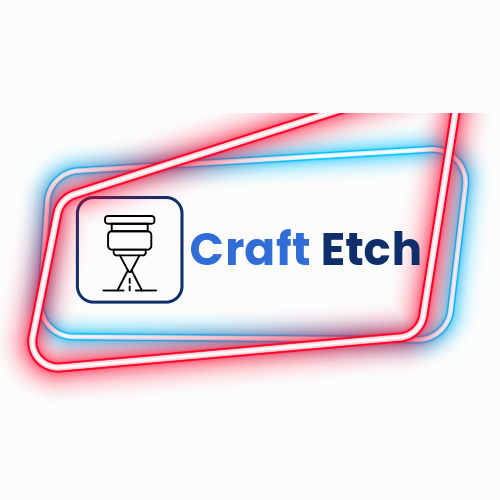Join Workshops
Physical Address
304 North Cardinal St.
Dorchester Center, MA 02124
UV laser vs Fiber Laser
UV lasers use ultraviolet light for high precision and minimal thermal impact on delicate materials, while fiber lasers use optical fibers to amplify light, providing high power and efficiency for cutting and engraving tougher materials like metals.
The debate between UV laser and fiber laser technologies has been ongoing for some time now. While they both offer unique advantages and features, the debate comes down to which one is the better choice in terms of performance, cost, and versatility.
In this article, we will explore the differences between the two technologies and discuss the pros and cons associated with each.
We will also examine the applications for which each technology is best suited. With this information, you can make an informed decision about which one is the right choice for you.
Main Differences
Here are the key differences of UV laser & fiber laser cutters.
| Factors | UV Laser | Fiber Laser |
| Wavelength Range | UV lasers can have a wide range of wavelengths, including 157 nm, 266 nm, 355 nm, and 532 nm. | Fiber lasers typically have a wavelength range of 1550 nm to 1650 nm. |
| Power Output | UV lasers can range from milliwatts to hundreds of watts. | Fiber lasers can range from milliwatts to kilowatts. |
| Applications | UV lasers are used for printing, medical, optical communication, and industrial applications. | Fiber lasers are used for cutting, welding, marking, and medical applications. |
A UV laser produces light in the ultraviolet spectrum, with wavelengths typically between 200 and 400 nanometers. These lasers are typically used for precise cutting and drilling applications, such as in the microelectronics industry for making circuit boards, as well as in medical and dental applications, such as for making dental crowns. The shorter wavelength of the UV laser beam offers greater precision than is possible with other laser sources.
A fiber laser is a type of laser that uses a doped glass optical fiber as its gain medium. Fiber lasers are capable of outputting high power and offer good beam quality. They are used in a wide variety of industrial applications including laser cutting and welding, marking and engraving, and 3D printing. Examples of fiber lasers are the Nd:YAG and Nd:YVO4 lasers, which are widely used for industrial laser marking and cutting.

When UV lasers outweigh the fiber laser?
UV lasers are better than fiber lasers when a high level of precision is needed for the application. UV lasers are capable of producing extremely short and high–intensity pulses of light, allowing them to achieve very precise and delicate cutting, drilling and marking. UV lasers are also more efficient than fiber lasers and produce faster high–resolution engraving, making them ideal for applications that require a high degree of accuracy.
For example, in recent case study conducted by Amada Miyachi America, Inc., a company was looking for a laser marking solution for the marking of a medical device component. The component was made of a highly reflective titanium material that was difficult to mark with a traditional fiber laser. After testing multiple laser marking solutions, the company selected a UV laser as the ideal solution due to its high–precision, high–resolution, and fast marking capability. The UV laser was able to consistently mark the component with a high degree of accuracy and quality.
Here’s when fiber laser outweighs UV laser
Fiber lasers have become increasingly popular for many industrial applications, particularly when compared to traditional UV lasers. Fiber lasers offer several advantages over UV lasers, including higher power output, higher beam quality, longer lifetimes, and lower cost.
One example of a case study that demonstrates the advantages of fiber lasers over UV lasers is the use of fiber lasers in the automotive industry. In particular, fiber lasers are being used to cut and weld sheet metal parts, a process that was previously done with UV lasers. The higher power output of fiber lasers enables them to cut thicker metal parts than could be accomplished with UV lasers, which reduces the amount of time and money spent on the process. Additionally, fiber lasers have a longer lifetime and require less maintenance than UV lasers, which further reduces costs and improves efficiency.
Moreover, a CO2 laser cannot make color engravings like the MOPA fiber lasers. Here are the best fiber lasers that can engrave on color.
UV laser cutter
A UV laser cutter is a type of laser cutting machine that uses ultraviolet (UV) light to cut materials. It is typically used to cut thin materials like paper, vinyl, plastic and textiles. The UV laser produces a beam of UV light that is focused onto the material to be cut.
The UV light causes the material to evaporate, leaving a precisely cut edge. Examples of applications for UV laser cutters include creating intricate patterns and designs for fabric, paper, leather, and other materials.
Advantages of UV laser cutter
These are the advantages of laser cutting using an UV laser cutter:
- Laser cutting is more precise than traditional cutting methods and offers better accuracy and higher resolution.
- UV laser cutters create smoother, cleaner, and more precise edges than traditional cutting methods
- UV laser cutting can be used to cut a wide variety of materials, such as paper, plastic, wood, and metal.
- The high accuracy of UV laser cutting reduces material waste and increases efficiency.
- The automated nature of the UV laser cutting process reduces manual labor and increases productivity.
- UV laser cutting is generally more cost effective than traditional cutting methods.
Limitations
These are the negative sides of a UV laser cutter:
- UV laser cutters are expensive and require significant upfront costs.
- UV laser cutters are limited in their cutting thickness capabilities.
- UV laser cutting can be dangerous and requires the use of protective equipment to ensure the safety of workers.
- The heat generated by the UV laser can affect the material’s properties, creating a heat–affected zone around the cut.
Fiber laser cutter
A fiber laser cutter is a type of laser cutting machine that uses a fiber laser source to generate a laser beam of high power density and high brightness. This beam is then focused and directed onto the material that needs to be cut, resulting in a clean and precise cut. The fiber laser cutter is capable of cutting a variety of materials, including metals, plastics, and wood. The fiber laser source also allows for a wide range of laser cutting speeds, depending on the type of material being cut.
Recently, the infrared lasers are considered to be fiber laser alternatives due to the same laser wavelength and faster engraving speed.
Advantages of fiber laser
- High precision: Fiber laser cutting machines have the capability to achieve high levels of accuracy and repeatability, with cutting tolerances of ± 0.05mm.
- High speed: Fiber lasers are faster than traditional CO2 lasers at cutting certain materials, such as steel and aluminum.
- Low operating costs: Fiber lasers can consume as little as one–tenth of the energy of a CO2 laser, resulting in lower energy bills.
- Low maintenance: Fiber lasers require minimal maintenance, with no need for a beam alignment system or periodic realignment.
- No consumables: Unlike traditional CO2 lasers, fiber lasers do not require the use of consumables such as nozzles and mirrors.
- High reliability: Fiber lasers deliver precise and consistent cutting results over long periods of time.
Limitations of fiber laser
These are the negative sides of fiber laser
- Fiber lasers are more expensive than CO2 lasers and require a larger initial investment.
- Fiber lasers are limited to cutting materials that are reflective to infrared light, such as metal.
- The heat-affected zone (HAZ) is larger with fiber lasers than with CO2 lasers.
- Automation of fiber laser cutting is more difficult than with CO2 lasers, as the beam is more difficult to control and the cutting head must be changed more often.
Final Thought
In conclusion, UV and fiber lasers have many differences, but both are used for a variety of applications. UV lasers are best suited for precise cutting and drilling applications due to their short wavelength and high precision, while fiber lasers are more commonly used for marking and engraving, and for industrial laser cutting and welding. Depending on the application, either laser can be chosen to best suit the need.



